Digitalization
What does digitalization mean in tourism?
 Peter Seidl
Peter Seidl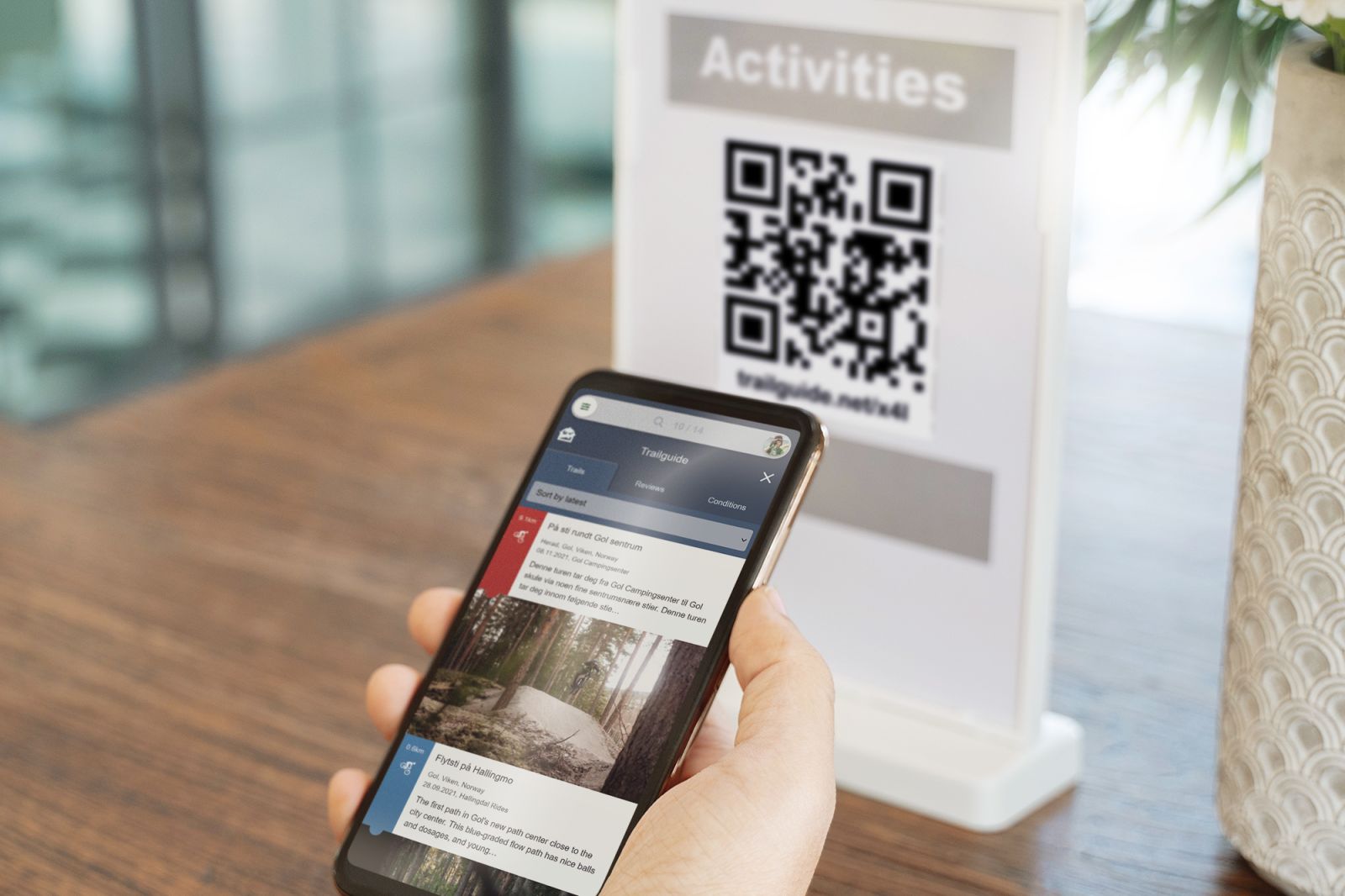
Digitized information and a digitalized process.
Digitization vs. digitalization
Digitization and digitalization are not the same! Digitization is the first step towards digitalization. But getting stuck with digitization can burden your business with complicated and ineffective processes.
Only with the next step - the digital transformation of processes - the full potential of digitalization can be exploited! But what is digitalization and the difference to digitization?
Digitization
is the translation of the information of an analogue source material into a digital format. In the case of a text or an image, it is the conversion of the information on paper into bits and bytes that are stored on a digital medium. The digital version of a paper map could be a PDF document. A scanner translates the colors and shapes of the paper pixel by pixel into digital values of hue, saturation, and brightness.
While paper is the medium to carry the colors and shapes of the physical map, a computer and screen are required to display the digital information in a way that the human eye can read.
A major benefit of digital data is that duplicating information becomes easy. Imagine the process of making copies of a printed map. Paper, ink, print plate, and a machine to apply it to the paper is required. There is a high material usage. The setup, production, and post processing are time consuming and expensive.
A digital map, for example in the form of a PDF, can be copied thousands of times very quickly. The tools to do that are so easy to use that almost everyone can do it with a simple computer.
The distribution of digital information becomes a lot easier. Paper maps need to be transported with vehicles and complicated logistic processes to the distribution points. Each user must physically go to the distribution points to pick up the map. A digital copy of a map can easily be sent via newsletter email, posted on social media, or downloaded from a website by the users.
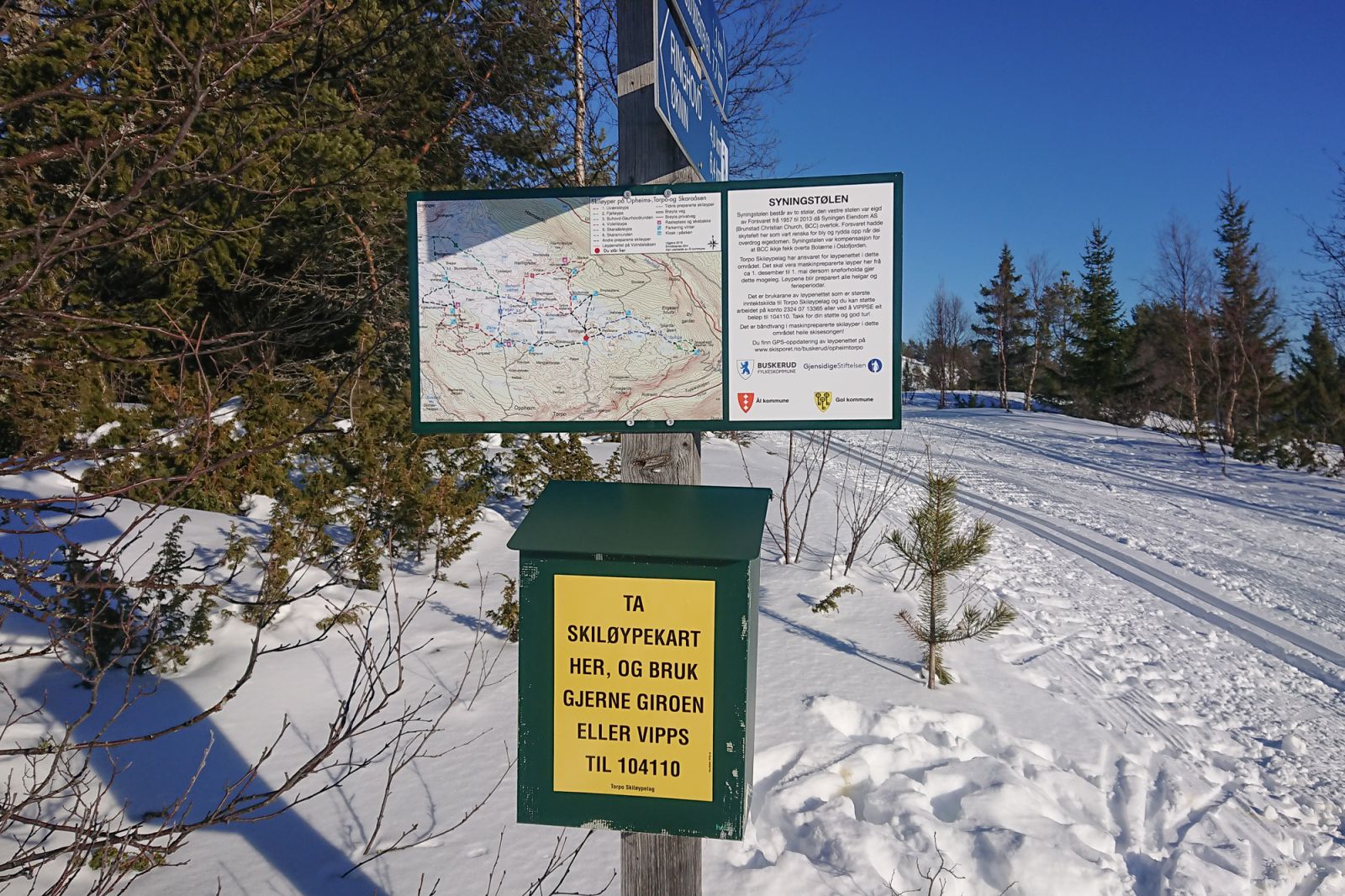

Distribution point for print maps outdoors.
That sounds like a big improvement already, but we need to be careful! Print products are not created for display on screens, especially phones. The scale, text size, colors and contrast are tailored to the large size of a paper map. It can be complicated and frustrating to use the digital version!
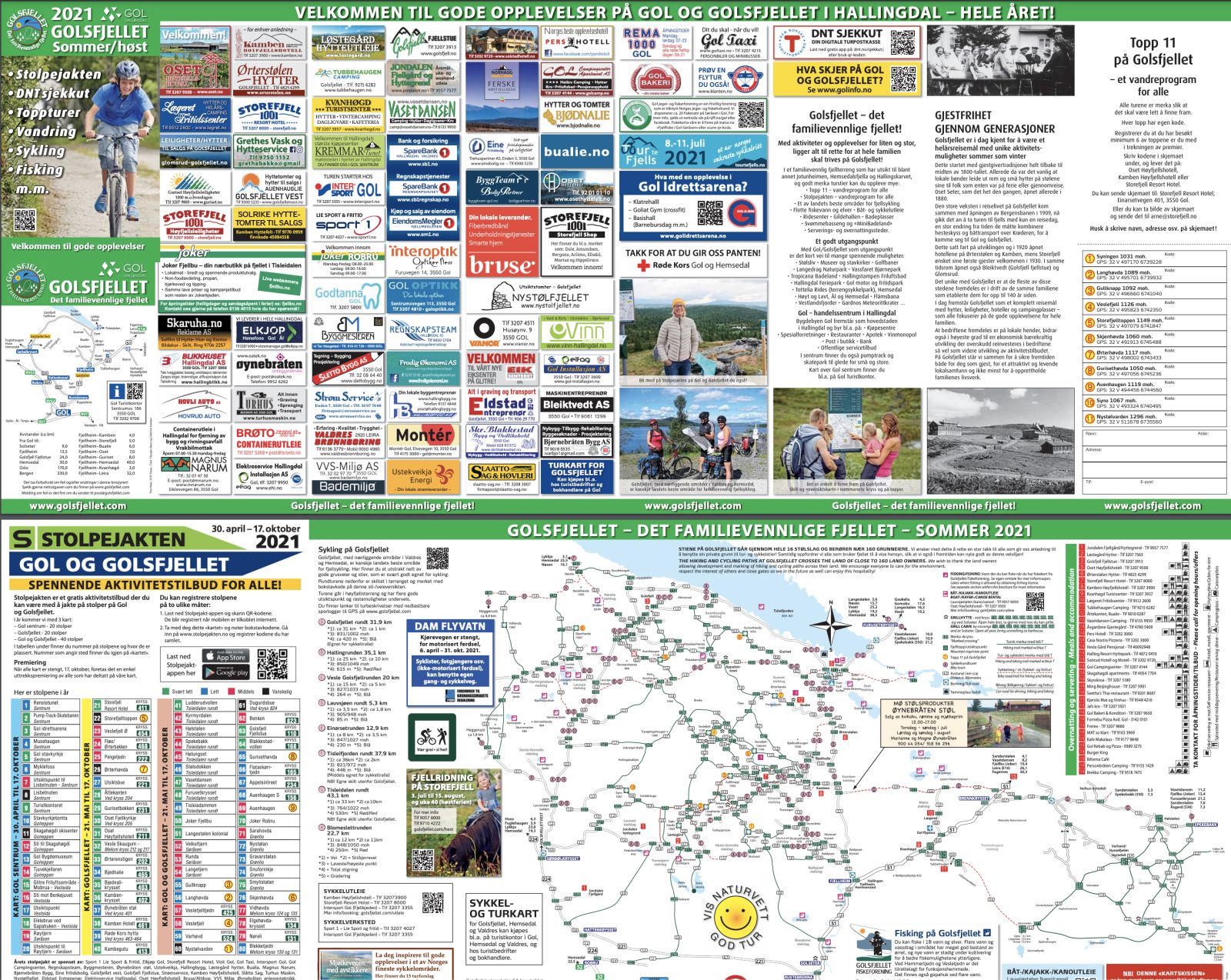
Printed map that can't be digitalized and used on mobile screens.
And what happens when the map has to be updated? A paper map needs to be reprinted and redistributed. But even the PDF stored on the user's computer or phone is not accessible to the creator of the map. The information is dead, soon outdated, and loses value both for the user and the destination.
“We translated information into a digital format, but didn’t utilize the technology to improve the process of creating and managing the information.”
Here we see the limits of digitization. We translated information into a digital format, but didn’t utilize the technology to improve the process of creating and managing the information. In order to realize the full potential, to increase efficiency and value, we have to go one step further and find out what digitalization is.
Digitalization
is the use of digital technology to enhance business processes in order to increase the value of the product for the customer and to reduce the use of resources. For the business this means higher turnover and lower costs.
In tourism we see isolated examples of digitalization such as booking platforms. But they focus on the sales process and ignore most of the important customer experience.
Let's go back to our example above and compare the processes of updating a paper map, a digitized PDF map, and the digitalized process with a content management system (CMS). For the CMS we use Trailguide as an example because we know it best, but of course you can substitute it with other software.
A map has to be updated constantly. Information changes, new activities have to be added, old ones removed. The map is the basic source of information for all kinds of outdoor activities - which are the product of a tourism destination.
| Step | Paper map | Digitized map (PDF) | Digitalized (CMS) |
|---|---|---|---|
| Create map data | Graphic program required, or communication with agency, multiple iterations of changing and confirming. | Scan print or use existing print data. | Only a web-browser required, easy to edit, result is visible immediately. |
| Production | Material intensive, expensive, time consuming. | - | - |
| Distribution | Has to be sent to, or picked up by the recipient. Then distributed to the display locations. | Upload to the website provider, create a QR-code, send out a newsletter. | Changes are automatically published by the CMS in the app, website plugins and QR codes. |
| Accessibility | Only available in a few places. Physical storages (e.g. tourist offices, map boxes) are expensive. Limited edition - reprint required. | Through website, QR-codes, Newsletter. | Independent from time and location. Through the app, website plugins, QR-codes, newsletter, social media. |
| Usage | Maps are often only printed once a year, so the quality of information decreases. Navigation only for advanced users. Contains no additional information about the activities like description, images, status, current conditions, user reviews. | Downloaded information can not be updated and loses quality. A PDF is just a non-interactive image, no additional info to the activities, navigation only for advanced users, no interaction with the user (feedback, conditions, status), complicated to use with on phone screens. | Interactive map with additional information and app functions, up to date information, see your location to navigate, user interaction possible, works on all devices. |
Comparison of the different processes to update information on a map.
We can clearly see a big difference between the three processes. The process with the digitized map has some advantages, but still lacks some of the most significant improvements. Finally the digitalized process has great added value for the customer, is faster and cheaper:
Added value for the customer:
- Users have all necessary information in their pocket. Large amounts of information can be saved and displayed in a compact, clear and easy to use way.
- Easy and quick accessibility of information, independent of time and location.
- Additional functions of an app like navigation.
- Easily find suitable activities for the individual demands with the search and filter for the interactive map and the activity browser.
- Users get reliable up-to-date information.
- Uniform medium to present and plan activities from home, on site, and during the activity.
- Users can leave feedback, and see feedback from others.
Saved time and costs:
- Maintaining a single source of content instead of changing content in many different places.
- Easy and quick to edit content.
- Changes are directly visible and published.
- Saves print costs. No print required, or reprint cycles reduced.
- Reduce maintenance costs by distributing or channeling traffic based on current conditions.
Additional benefits:
- Statistics and user feedback enable better decisions.
- Provide your guests with an app and meet the demands of the digital generation of customers.
- Increased reach by publishing your content on a popular platform.
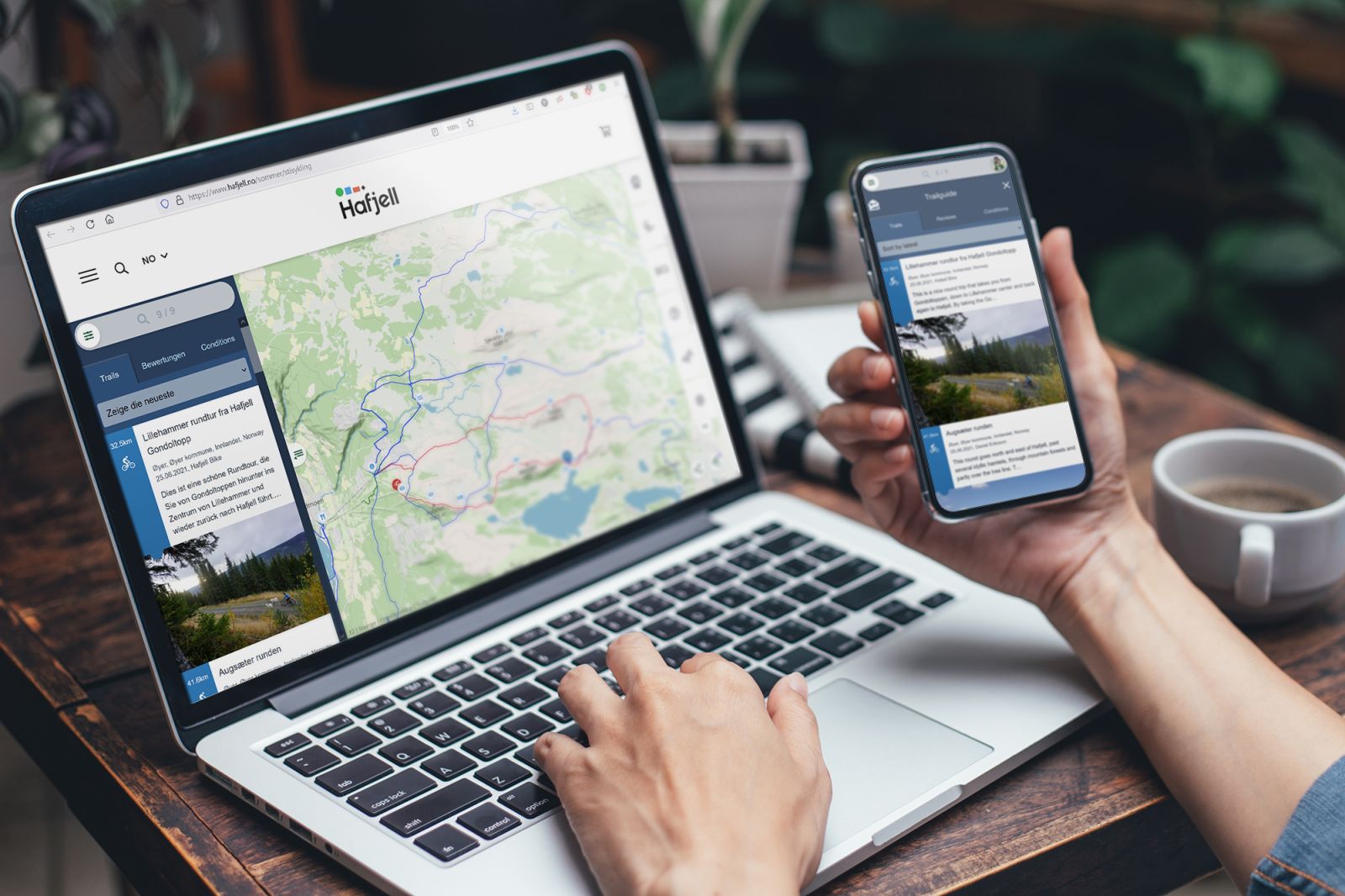
Seamless integration on all platforms. Changing on source updates all communication channels.
So what does digitalization mean for tourism?
First of all it means that there is a great potential for improvements! From our experience, there are still many analogue processes or isolated digitization in tourism. There are few examples of limited digitalization, like booking platforms. But they represent a small part of the customer journey (the path a person takes to become a customer of a product or service) only. It focuses on the sale process, while the whole guest experience (consuming the product, e.g. the holiday, the activities) is often left untouched.
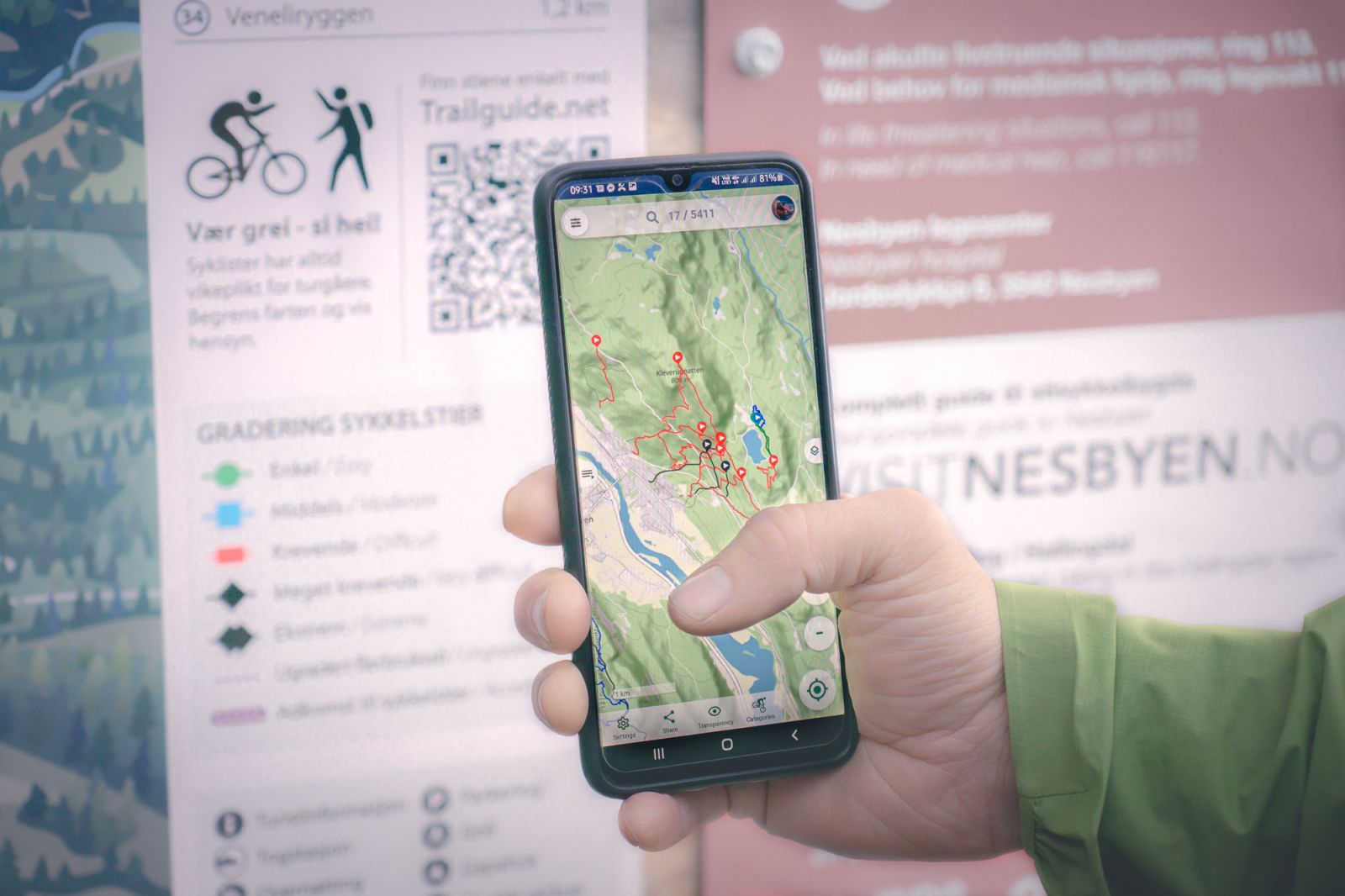
Scanning the QR-code of an infoboard to open the digital interactive map.
But the experience is the part that has value for the guest, that decides whether the experience is good or bad. And when guests are happy, they stay longer, come back, and recommend! Destinations, and all businesses in tourism can increase the value for their guests, become more efficient and more competitive in the developing digital world.
Digital technology offers great chances but should not be used as an end in itself. To really benefit from digitalization you can ask yourself these questions:
- Does technology add value to the product?
- Does technology save resources like time and costs?
- How does technology help improve our processes in addition to the top level performance indicators time and costs? This can include security, communication, number of interfaces, decision making, employee satisfaction, market placement, reach, or other important strategic or operational targets.
- Does technology make new processes possible?